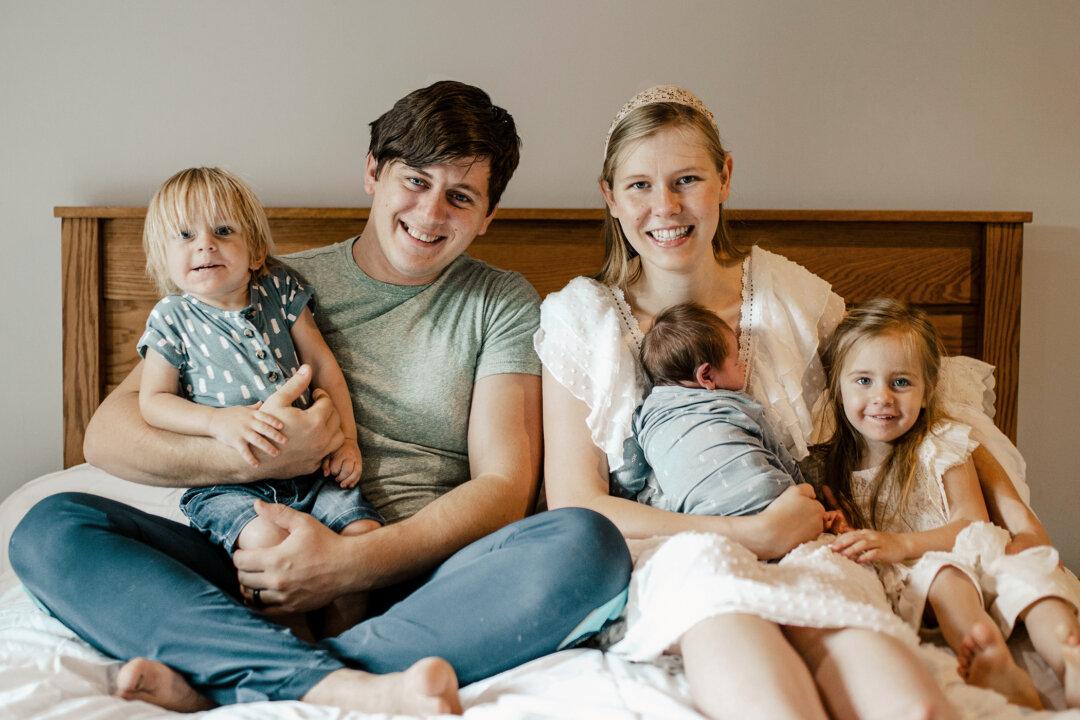Mariah Shrock, a stay-at-home mom of three, is sharing her experience of finding peace through home birth as well as her natural approach to raising happy and healthy children grounded in “strong morals” and traditional family values.
Originally from southeastern Ohio, Mrs. Shrock, 24, is married to Leo Shrock, 27, who grew up in Michigan. She says the way her husband supported and trusted her throughout pregnancy, labor, and birth has strengthened their bond in an “incredible way.” The couple runs a coffee shop and roastery and lives in Tennessee with their three kids: Charlette, 4, Charles, 3, and Clayton, 1.





